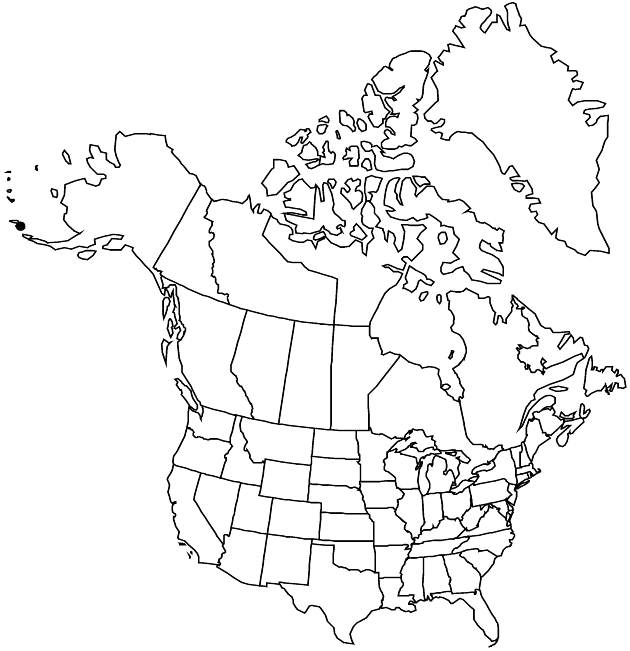Arnica unalaschcensis
Linnaea 6: 238. 1831.
Plants 8–30 cm. Stems simple (sparsely to moderately hairy, hairs translucent with purple septa). Leaves 2–5 pairs, mostly cauline; petiolate (proximal) or sessile; blades elliptic-oblanceolate, obovate or spatulate, (3–)5–12 × 1.5–3 cm, margins usually entire proximal to mid blade, serrate to dentate distally, apices acute to obtuse or abruptly pointed, faces usually glabrate, sometimes scabrous to sparsely stipitate-glandular. Heads 1 (erect). Involucres hemispheric or turbinate-hemispheric (bases moderately villous). Phyllaries 14–24, lanceolate (apices obtuse, tips blunt, callous). Ray florets 6–17; corollas yellow (laminae 12–17 mm). Disc florets: corollas yellow; anthers dark purple. Cypselae brown, 4–5 mm, shortly hispidulous (hairs duplex, apically forked) and stipitate-glandular; pappi tawny, bristles subplumose. 2n = 38.
Phenology: Flowering Jun–Aug.
Habitat: Coastal tundra to alpine slopes
Elevation: 0–1500 m
Distribution

Alaska, Asia (Japan, Russian Far East).
Discussion
Selected References
None.